With new technologies revolutionizing data collection, wildlife researchers are becoming increasingly able to collect data at much higher volumes than ever before. Now we are facing the challenges of putting this information to use, bringing the science of big data into the conservation arena. With the help of machine learning tools, this area holds immense potential for conservation practices. The applications range from online trafficking alerts to species-specific early warning systems to efficient movement and biodiversity monitoring and beyond.
However, the process of building effective machine learning tools depends upon large amounts of standardized training data, and conservationists currently lack an established system for standardization. How to best develop such a system and incentivize data sharing are questions at the forefront of this work. There are currently multiple AI-based conservation initiatives, including Wildlife Insights and WildBook, that are pioneering applications on this front.
This group is the perfect place to ask all your AI-related questions, no matter your skill level or previous familiarity! You'll find resources, meet other members with similar questions and experts who can answer them, and engage in exciting collaborative opportunities together.
Just getting started with AI in conservation? Check out our introduction tutorial, How Do I Train My First Machine Learning Model? with Daniel Situnayake, and our Virtual Meetup on Big Data. If you're coming from the more technical side of AI/ML, Sara Beery runs an AI for Conservation slack channel that might be of interest. Message her for an invite.
Header Image: Dr Claire Burke / @CBurkeSci

Explore the Basics: AI
Understanding the possibilities for incorporating new technology into your work can feel overwhelming. With so many tools available, so many resources to keep up with, and so many innovative projects happening around the world and in our community, it's easy to lose sight of how and why these new technologies matter, and how they can be practically applied to your projects.
Machine learning has huge potential in conservation tech, and its applications are growing every day! But the tradeoff of that potential is a big learning curve - or so it seems to those starting out with this powerful tool!
To help you explore the potential of AI (and prepare for some of our upcoming AI-themed events!), we've compiled simple, key resources, conversations, and videos to highlight the possibilities:
Three Resources for Beginners:
- Everything I know about Machine Learning and Camera Traps, Dan Morris | Resource library, camera traps, machine learning
- Using Computer Vision to Protect Endangered Species, Kasim Rafiq | Machine learning, data analysis, big cats
- Resource: WildID | WildID
Three Forum Threads for Beginners:
- I made an open-source tool to help you sort camera trap images | Petar Gyurov, Camera Traps
- Batch / Automated Cloud Processing | Chris Nicolas, Acoustic Monitoring
- Looking for help with camera trapping for Jaguars: Software for species ID and database building | Carmina Gutierrez, AI for Conservation
Three Tutorials for Beginners:
- How do I get started using machine learning for my camera traps? | Sara Beery, Tech Tutors
- How do I train my first machine learning model? | Daniel Situnayake, Tech Tutors
- Big Data in Conservation | Dave Thau, Dan Morris, Sarah Davidson, Virtual Meetups
Want to know more about AI, or have your specific machine learning questions answered by experts in the WILDLABS community? Make sure you join the conversation in our AI for Conservation group!
- 0 Resources
- 0 Discussions
- 4 Groups
- 0 Resources
- 0 Discussions
- 7 Groups
Background in sustainable development + data science, AI for bioacoustics (BSc Cooperation and Development, Italy; MSc data science, Sweden)



- 0 Resources
- 17 Discussions
- 4 Groups
- @lvgliarose
- | she/her
Bat Conservation Trust
Research Manager at Bat Conservation Trust
- 0 Resources
- 8 Discussions
- 12 Groups
- @Ebennitt
- | She/her
Working primarily in Botswana and other southern African countries, on wild mammal movement, ecology and physiology
- 0 Resources
- 4 Discussions
- 5 Groups
- @sehuebner
- | she/her
Wildlife Ecologist and Program Manager at the Smithsonian Institution
- 0 Resources
- 3 Discussions
- 9 Groups
I have mixed experiences from 20+ years doing SATCOM and other IT roles with the US Army. I also have 4 years experience working in the marine environment doing forage fish spawning research. My goal is to advance my abilities in AI to bring into the realm of wildlife research.
- 0 Resources
- 0 Discussions
- 5 Groups
- @jguenter
- | he/him/his
Species360 CEO - passionate about using data to care for and conserve species
- 0 Resources
- 0 Discussions
- 5 Groups
I have worked in the vertebrate pest industry for over 11 years and am on the practical, on the ground implementation of AI animal control systems.
- 0 Resources
- 0 Discussions
- 1 Groups
- @steventay
- | TAY
Dynamique ET PROACTIF, JE SUIS PASSIONNÉ PAR LA PROTECTION DE L'ENVIRONNEMENT, LE TOURISME RESPONSABLE ET LA CONSERVATION DES ÉCOSYSTÈMES.
- 0 Resources
- 0 Discussions
- 8 Groups
- @Aurel
- | She/Her
Looking to reconcile biodiversity conservation and finance.

- 0 Resources
- 0 Discussions
- 10 Groups
- @Kyle_Birchard
- | He/Him
Building tools for research and management of insect populations
- 0 Resources
- 0 Discussions
- 6 Groups
Evolutionary Ecology group at Naturalis Biodiversity Center (the Netherlands)
11 June 2022
In David Rolnick's group at Mila Quebec AI Institute & McGill University
4 June 2022
IO is hiring for a Software Engineer, Machine Learning Scientist, and Head of Machine Learning & Science
4 June 2022
Careers
Are you passionate about making a meaningful impact on our community? Seattle-based Vulcan is looking to hire a science leader to support its work advising the Paul G. Allen Family Foundation.
4 June 2022
Microchip has just announced the 1 GHz SAMA7G54 single-core Arm Cortex-A7 microprocessor (MPU) with MIPI CSI-2 and parallel camera interfaces, as well as up to four I2S, one SPDIF transmitter and receiver, and a 4-...
3 June 2022
Global Forest Watch's Small Grants Fund is now open for applications for the 2023 grant cycle. Deadline is August 1.
1 June 2022
The African Robotics Unit is looking for a Postdoctoral Research Associate to join A/Prof. Amir Patel’s lab at UCT. The Postdoc will investigate how sensor fusion can be leveraged to understand the locomotion of...
1 June 2022
Looking for biodiversity data? New review paper has an overview of biodiversity information portals, both global and country-specific
9 May 2022
Careers
The Department of Environmental Science, Policy & Management (ESPM) seeks applicants for the position of Executive Director for the Eric & Wendy Schmidt Center for Data Science & Environment (DS4E) at the...
9 May 2022
In Season Four of the Virtual Meetup Series, we’re bringing together leading engineers, conservationists, and academics to explore the future of technology in movement ecology and ask where exactly investment is needed...
29 April 2022
Check out this round-up of three of the latest conservation tech studies and news. See more conservation tech news by subscribing to our bi-monthly digest.
24 March 2022
Community Announcement
Are you an early career Kenyan conservationist looking to explore emerging conservation technologies while networking with a strong cohort of other female leaders? Apply now for our 6-month Women in Conservation Tech...
8 March 2022
June 2025
event
July 2025
October 2025
event
event
November 2023
event
73 Products
Recently updated products
16 Products
Recently updated products
| Description | Activity | Replies | Groups | Updated |
|---|---|---|---|---|
| greetings! i sent you a PM regarding this, feel free to contact me however is most convenient for you - regards,chris |
|
Acoustics, AI for Conservation, Camera Traps, Climate Change, East Africa Community, Wildlife Crime | 2 years 1 month ago | |
| I'm looking for any recommendations for any entry level/internship remote roles/companies in the United States that are focused in... |
|
AI for Conservation, Conservation Tech Training and Education, Early Career, Geospatial | 2 years 1 month ago | |
| Hi everyone! and thanks @StephODonnell for the invite :)I’m a software engineer working on MLOps, and currently studying for a part-time... |
|
AI for Conservation, Open Source Solutions | 2 years 1 month ago | |
| Indeed, I'll be there too! I like to meet new conservation friends with morning runs, so I will likely organize a couple of runs, maybe one right near the conference, and... |
|
Acoustics, AI for Conservation, Autonomous Camera Traps for Insects, Camera Traps, Geospatial | 2 years 1 month ago | |
| Hi everyone! The Fine Grained Visual Categorization Workshop (FGVC) is hosting its 10th rendition at CVPR this June in Vancouver. A huge... |
|
AI for Conservation, Camera Traps, Marine Conservation | 2 years 1 month ago | |
| Hi everyone,I'm new here :)I'm doing my thesis of biology bachelor about Rhino poaching. I wanted to ask here if yu have some articles... |
|
AI for Conservation, Ending Wildlife Trafficking Online, Human-Wildlife Conflict, Wildlife Crime | 2 years 1 month ago | |
| Yes please reach out with any questions on acoustic monitoring, Arbimon, RFCx, etc.! |
|
Acoustics, AI for Conservation, Data management and processing tools | 2 years 1 month ago | |
| I couldn't agree more with both of these comments tom! I'm reading hundreds (literally hundreds) of applications for open WILDLABS roles at the moment, and the ones that stand out... |
+2
|
AI for Conservation, Drones, Early Career, Sensors | 2 years 2 months ago | |
| We have made available our underwater videos on YouTube as a playlist https://www.youtube.com/playlist?list=PLnhVZKKy8WkZKriCIV6r7upWhHNVrU_7L It's about 1.113 short video... |
+2
|
AI for Conservation, Camera Traps, Data management and processing tools, Marine Conservation | 2 years 2 months ago | |
| Hi Steph, This should be a simple project. Recently I came across a website with a sample video I am not sure whether it was from the wild Labs website. Where a camera is... |
|
AI for Conservation, Camera Traps | 2 years 3 months ago | |
| Bluesky have a commercial tree crown dataset available covering most of Great Britain (England, Wales and parts of Scotland). There is a canopy layer with approximate outlines of... |
|
AI for Conservation, Drones | 2 years 3 months ago | |
| Rainforest Connection's (RFCx) Guardian devices may be of interest. They are solar-powered and have connectivity options for Wifi, GSM and satellite transfer. They've previously... |
|
Acoustics, AI for Conservation, Connectivity, Data management and processing tools, Protected Area Management Tools, Sensors | 2 years 3 months ago |
Tech Tutors: How do I get started using ML for my camera traps? Building Accurate Project-Specific Models
25 June 2020 12:02am
26 June 2020 2:32pm
Hi everyone!
We've now posted Sara's session to our youtube channel, and I've also popped it up the top of this thread.
The collaborative notes worked really well! I've now updated them to capture what happened in the chat - it should be a helpful companion to go alongside the recording. The notes have links, projects, and key discussions we saw in the chat, and summarise the questions Sara coverd in the discussion as well as the Qs we weren't able to get to (40mins overtime was our limit!). If your question was one of the outstanding ones and you'd like to have it answered, please drop it in the discussion below.
The notes now also have the participant check ins (such an awesome range of places, projects and interests!) - I'm sharing these as seeing what other people are doing might help you connect with each other. If you see someone you want to connect with, try and find them using our member direcyour people tab. If you can't, email Ellie and she will see if that person is happy to hear from you before connecting you.
Reminder, registration is open for Carlos' tutorial next week: How do I perform automated recordings of bird assemblages? Register here.
Thanks everyone!
Steph
2 July 2020 8:58pm
Great talk! I thoroughly enjoyed it. Some high schoolers have done small AI projects(s) and have interest in the wildlife.
What resources would you all suggest to further develop high schooler’s interest in AI?
How do I scale up acoustic surveys with Audiomoths?
25 June 2020 12:00am
How do I perform automated recordings of bird assemblages?
 Carlos Abrahams
Carlos Abrahams
19 June 2020 12:00am
How do I train my first machine learning model?
 Daniel Situnayake
Daniel Situnayake
9 June 2020 12:00am
How do I get started using Machine Learning for my camera traps?
9 June 2020 12:00am
Innovator Interview: Hack the Poacher
4 June 2020 12:00am
The Perfect Paw Print: Collecting Data with FIT
3 June 2020 12:00am
Competition: 2020 Hackaday Prize
26 May 2020 12:00am
WILDLABS Tech Tutors: Season One
19 May 2020 12:00am
Get To Know FIT
6 May 2020 12:00am
Competition: iWildCam 2020
4 May 2020 12:00am
Training Course: Quantitative Analysis of Marine & Coastal Drone Data
 Duke Marine Lab
Duke Marine Lab
29 April 2020 12:00am
Call for Submissions – Arm Research Summit 2020
24 April 2020 12:00am
WILDLABS Tech Hub: WWF PandaSat
13 April 2020 12:00am
Webinar 11PST 3/20 - Deep Learning for Airborne Tree Detection
17 March 2020 1:28am
17 March 2020 3:52pm
Thanks Ben. I'll see what I can do.
24 March 2020 9:57am
Hello Ben. Unfortunately I couldn't make it on Friday. It would be great if I could take a look at your slides. I'm interested in trying to count mangrove trees. I have some WorldView 2 data. Do you think I could use DeepForest for this?
31 March 2020 4:21am
DeepForest docs are here.
https://deepforest.readthedocs.io/
Welcome to have a look. My experience is that individual trees cannot be distinguished in satellite imagery. The coarest resolution we've had success with is 0.3m. However, the deepforest weights may still useful as a starting location. If there are visible objects in your image that you want to detect, collecting a few hundred training data samples and retraining the model for 2-3 epochs could be useful. See the link for details. Happy to help, submit issues on the github repo is something isn't clear/doesn't work. Everything is in dev.
WILDLABS Community Call Recording: Rainforest X-PRIZE
30 March 2020 12:00am
Open, challenging dataset for audio classification
27 March 2020 10:52am
27 March 2020 11:51am
Hi Radek,
I'm sure others can help here, but check out our recent virtual meetup (it'll be posted here in about an hour), the speakers - particularly Dave Watson - shared open datasets that might be what you're looking for.
Over on Twitter, Jesse Alston is collating a google sheet so that people can advertise data sets that grad students can use to finish theses. @arik 's reply here might be of particular interest: 'We have been recording 24/7 soundscapes in remote US locations like Yellowstone NP and rural central Wisconsin with multiple GPS synced recorders. Our goal is to study wolf and coyote vocalisations, but if anyone can make use of these data for their own studies, drop me a line!.'
Hope this helps!
Steph
27 March 2020 12:25pm
Steph, thank you so much for this, this is wonderful :) Really, really apreciate you sharing this with me :) Diving into all of the wonderful resources from you, thank you so very much for this!
Radek
Help collate list of Ecology/Conservation Data Sets for grad students
27 March 2020 12:07pm
Automated species detection from camera traps
30 January 2020 8:43am
25 March 2020 2:59pm
I see. Im interested and would like to help. I will need the images to train the network. As many as possible.
if you dont have them yet, try to find similar images preferably of the same species. I will use them to test the performance of the detection.
25 March 2020 6:49pm
I'm not familiar with camera traps, but there are a couple of options:
1) If the animals tend to cover most part of the image, then you can train a CNN classifier to distinguish between species (available with the keras-Tensorflow modules in Python)
2) If, however, the animals only cover a small part of the image (e.g. in the distance), it might be better to use an object detector (I've used YOLOv2 in the past for fish detection), which however is not that straightforward, especially with Python (I used MATLAB)
In any case, keras-Tensorflow classification with Python might be the most straightforward option for your goal. You should also certainly have a look at Google's Wildlife Insights platform which is specialized for species classification from camera trap images.
27 March 2020 10:33am
This can be done, happy to help :) But I think I need to understand the situation a little bit more.
Do you already have the data for training / inference? Do you have any example images with the species in them annotated? Say a still from the camera with a tiger and a csv file referencing that file and annotating that there is a tiger in the image?
Would you like someone to do the developing and training of the deep learning model for you? I work as an AI research engineer at the Earth Species project and I am also a part of a community of deep learning practitioners where we apply cutting edge research to various problems. Here you can check a little initiative I started a couple of days ago to teach people how to work with audio (there is a related forum thread but unfortunately it is in closed forums for the time being as it is associated with a course that is under way). My main point is this - if you have the data and would like someone to help you out on the modelling part, I can coordinate this.
Alternatively, if you cannot release the data, I can point you to materials that can get you started to carry out the work yourself.
WILDLABS Tech Hub: Poreprint
26 March 2020 12:00am
Webinar: Citizen Science Online
 SciStarter
SciStarter
26 March 2020 12:00am
Enter the Zooniverse: Try Citizen Science for Yourself!
18 March 2020 12:00am
Tutorial: Train a TinyML Model That Can Recognize Sounds Using Only 23 kB of RAM
16 March 2020 12:00am
Accepting Applications: ArcGIS Solutions for Protected Area Management
4 March 2020 12:00am
Call for Nominations: Tusk Conservation Awards
3 March 2020 12:00am
Competition: Plastic Data Challenge
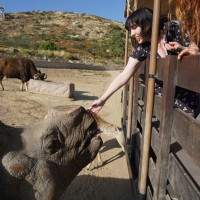 Ellie Warren
Ellie Warren
3 March 2020 12:00am
Hawai'i Conservation Conference
 Hawaiʻi Conservation Alliance
Hawaiʻi Conservation Alliance
28 February 2020 12:00am
Competition: The Artisanal Mining Grand Challenge
26 February 2020 12:00am
Listening to Nature: The Emerging Field of Bioacoustics
24 February 2020 12:00am
Team for Building of ML app for horse identification and conservation
20 February 2020 11:09pm



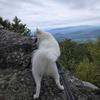












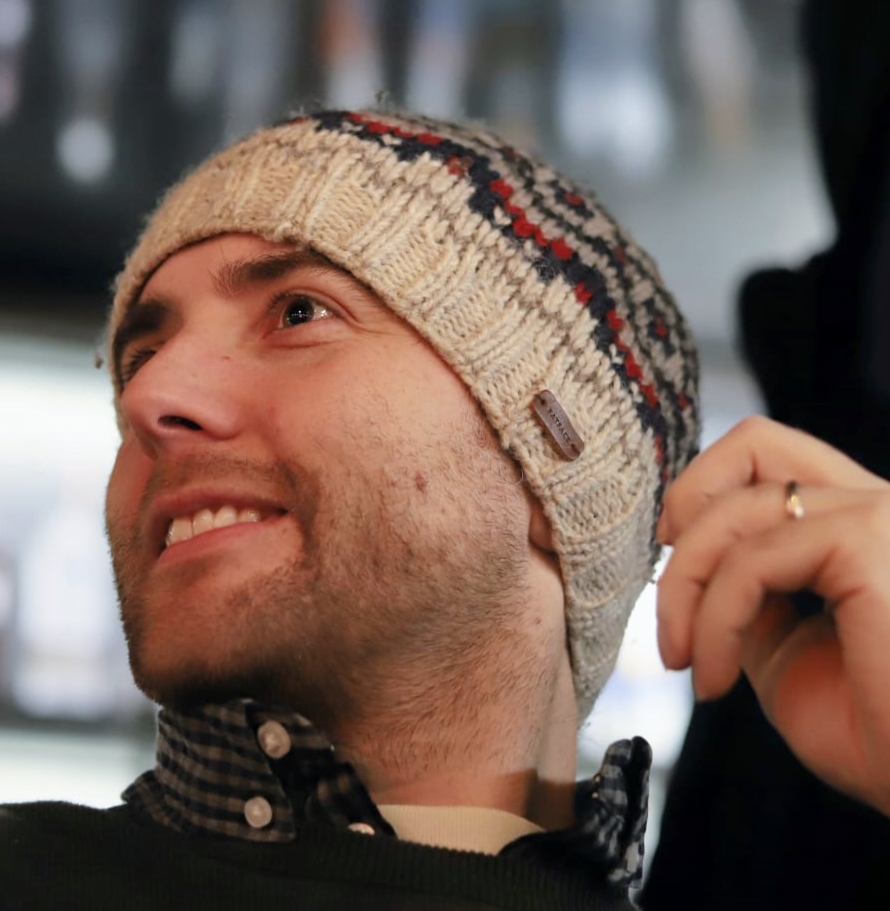













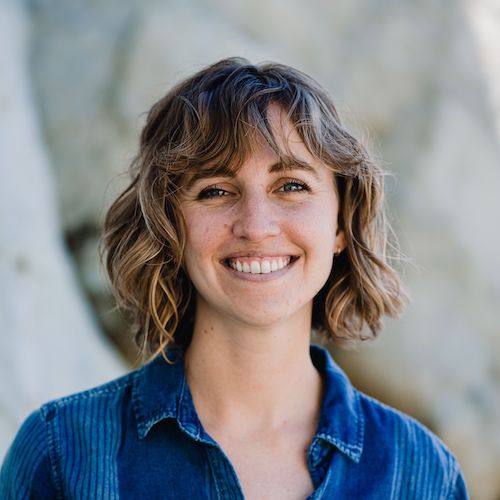




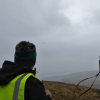









25 June 2020 6:01pm
This is a big, important question! I think having traceable DOIs for both datasets and machine learning models is a step in the right direction. GBIF is committed to this and can provide data DOIs, read more detail here and here.